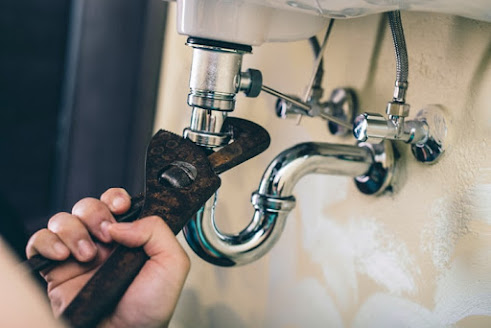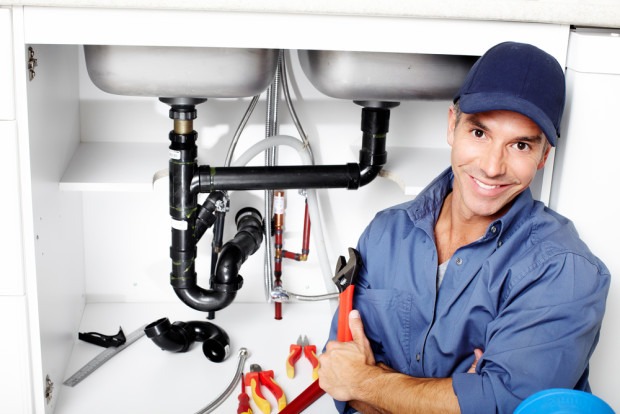Leave it to the Specialists: Typical Appliance Problems That Require a Plumbing Professional's Attention
Leave it to the Specialists: Typical Appliance Problems That Require a Plumbing Professional's Attention
Blog Article
This great article listed below on the subject of How To Fix Noisy Pipes is definitely enlightening. Don't bypass it.

To identify loud plumbing, it is important to identify very first whether the undesirable audios take place on the system's inlet side-in other words, when water is turned on-or on the drain side. Sounds on the inlet side have actually differed causes: excessive water pressure, used shutoff and faucet parts, incorrectly attached pumps or various other appliances, incorrectly put pipeline bolts, and also plumbing runs containing too many tight bends or other limitations. Sounds on the drainpipe side generally originate from poor location or, as with some inlet side noise, a design consisting of limited bends.
Hissing
Hissing sound that takes place when a tap is opened a little generally signals excessive water pressure. Consult your local water company if you think this problem; it will be able to tell you the water pressure in your area and can install a pressurereducing valve on the incoming supply of water pipe if required.
Thudding
Thudding noise, frequently accompanied by shuddering pipes, when a faucet or appliance shutoff is switched off is a problem called water hammer. The sound and also resonance are brought on by the resounding wave of stress in the water, which unexpectedly has no location to go. In some cases opening a valve that discharges water quickly right into an area of piping consisting of a restriction, elbow joint, or tee fitting can create the exact same condition.
Water hammer can typically be cured by installing fittings called air chambers or shock absorbers in the plumbing to which the problem valves or faucets are connected. These tools permit the shock wave developed by the halted circulation of water to dissipate airborne they consist of, which (unlike water) is compressible.
Older plumbing systems might have short vertical sections of capped pipe behind wall surfaces on tap competes the exact same function; these can ultimately fill with water, reducing or destroying their performance. The treatment is to drain pipes the water supply totally by shutting off the main water valve and also opening up all taps. Then open the major supply shutoff as well as close the faucets individually, beginning with the tap nearest the valve and ending with the one farthest away.
Babbling or Shrieking
Intense chattering or screeching that occurs when a shutoff or faucet is turned on, which generally vanishes when the fitting is opened fully, signals loosened or faulty internal components. The option is to replace the valve or tap with a new one.
Pumps and home appliances such as cleaning devices and also dishwashing machines can transfer electric motor noise to pipelines if they are improperly linked. Link such products to plumbing with plastic or rubber hoses-never rigid pipe-to isolate them.
Various Other Inlet Side Noises
Creaking, squealing, scratching, breaking, and tapping generally are triggered by the development or contraction of pipelines, typically copper ones providing hot water. The noises occur as the pipes slide versus loose bolts or strike nearby home framework. You can typically determine the location of the trouble if the pipes are subjected; simply follow the noise when the pipes are making noise. More than likely you will find a loosened pipe wall mount or a location where pipes lie so near floor joists or other mounting pieces that they clatter against them. Affixing foam pipe insulation around the pipes at the point of call should fix the trouble. Be sure straps as well as wall mounts are secure as well as give adequate support. Where feasible, pipeline fasteners ought to be connected to large architectural components such as foundation walls instead of to framing; doing so reduces the transmission of resonances from plumbing to surface areas that can magnify and also move them. If affixing fasteners to framework is inescapable, cover pipes with insulation or other durable product where they speak to bolts, and sandwich the ends of new fasteners between rubber washers when mounting them.
Fixing plumbing runs that struggle with flow-restricting tight or various bends is a last option that must be embarked on only after seeking advice from a proficient plumbing professional. However, this situation is relatively typical in older residences that might not have been built with indoor plumbing or that have actually seen numerous remodels, specifically by beginners.
Drainpipe Noise
On the drain side of plumbing, the chief objectives are to remove surface areas that can be struck by dropping or hurrying water and to insulate pipes to include inevitable audios.
In brand-new building and construction, bath tubs, shower stalls, toilets, and wallmounted sinks and basins ought to be set on or against durable underlayments to decrease the transmission of noise with them. Water-saving bathrooms as well as taps are much less loud than traditional designs; mount them rather than older kinds even if codes in your location still allow utilizing older components.
Drainpipes that do not run vertically to the basement or that branch right into straight pipeline runs sustained at floor joists or other framing present particularly problematic noise problems. Such pipes are large sufficient to emit substantial resonance; they likewise bring considerable amounts of water, which makes the situation even worse. In brand-new building and construction, define cast-iron dirt pipes (the big pipes that drain commodes) if you can manage them. Their enormity consists of much of the noise made by water passing through them. Additionally, prevent routing drains in walls shown to bedrooms and also spaces where individuals gather. Wall surfaces including drains must be soundproofed as was described previously, using dual panels of sound-insulating fiberboard as well as wallboard. Pipes themselves can be wrapped with unique fiberglass insulation produced the objective; such pipes have a resistant vinyl skin (occasionally including lead). Outcomes are not always sufficient.
If Your Plumbing is Making These Sounds, There’s a Problem
A Bang or Thump When You Turn Off a Faucet
If a loud bang or thump greets you each time your turn off running water, you likely have a water hammer. A water hammer occurs when the water velocity is brought to a halt, sending a shock wave through the pipe. It can be pretty jarring — even worse, damaging to your plumbing system. All that thudding could loosen connections.
Strange Toilet Noises
You’re so familiar with the sounds your toilet makes that your ears will be attuned to anything out of the ordinary. Fortunately, most unusual toilet noises can be narrowed down to just one of several problems.
Foghorn sound:
Open the toilet tank Flush the toilet When you hear the foghorn noise, lift the float to the top of the tank If you’re ambitious, you can remove the ballcock valve and disassemble it to replace the washer. Or you can more easily replace the ballcock valve entirely. This device is relatively inexpensive and available at most any hardware store.
Persistent hissing:
The hissing following a flush is the sound of the tank filling. It should stop once the tank is full. But if the hissing continues, it’s likely because water is leaking out of the tank. The rubber flap at the bottom of the tank can degrade, letting water slip through and into the bowl. That’s why the tank is refilling continuously. Fortunately, this is an easy fix:
Cut the water to the toilet by closing the shutoff valve on the water supply line. Flush the toilet to drain the tank. Disconnect the flapper Attach the new flapper Gurgling or bubbling:
Gurgling or bubbling suggests negative air pressure in the drain line, likely resulting from a clog. As air releases, it causes the water in the toilet to bubble. This could either be a minor issue or a major one, depending on the clog’s severity. Clogs can be caused by toilet paper or more stubborn obstructions such as tree roots. If you can’t work out the clog with a plunger, contact a professional plumber for assistance because a clog of this magnitude could lead to filthy and unsanitary sewage backups in your sink bathtub.

Do you appreciate reading about How To Fix Noisy Pipes? Put feedback directly below. We'd be interested to know your opinion about this entry. In hopes that you come back again later on. Don't hesitate to take the opportunity to distribute this blog posting if you appreciated it. Thank-you for taking the time to read it.
Schedule Service Report this page